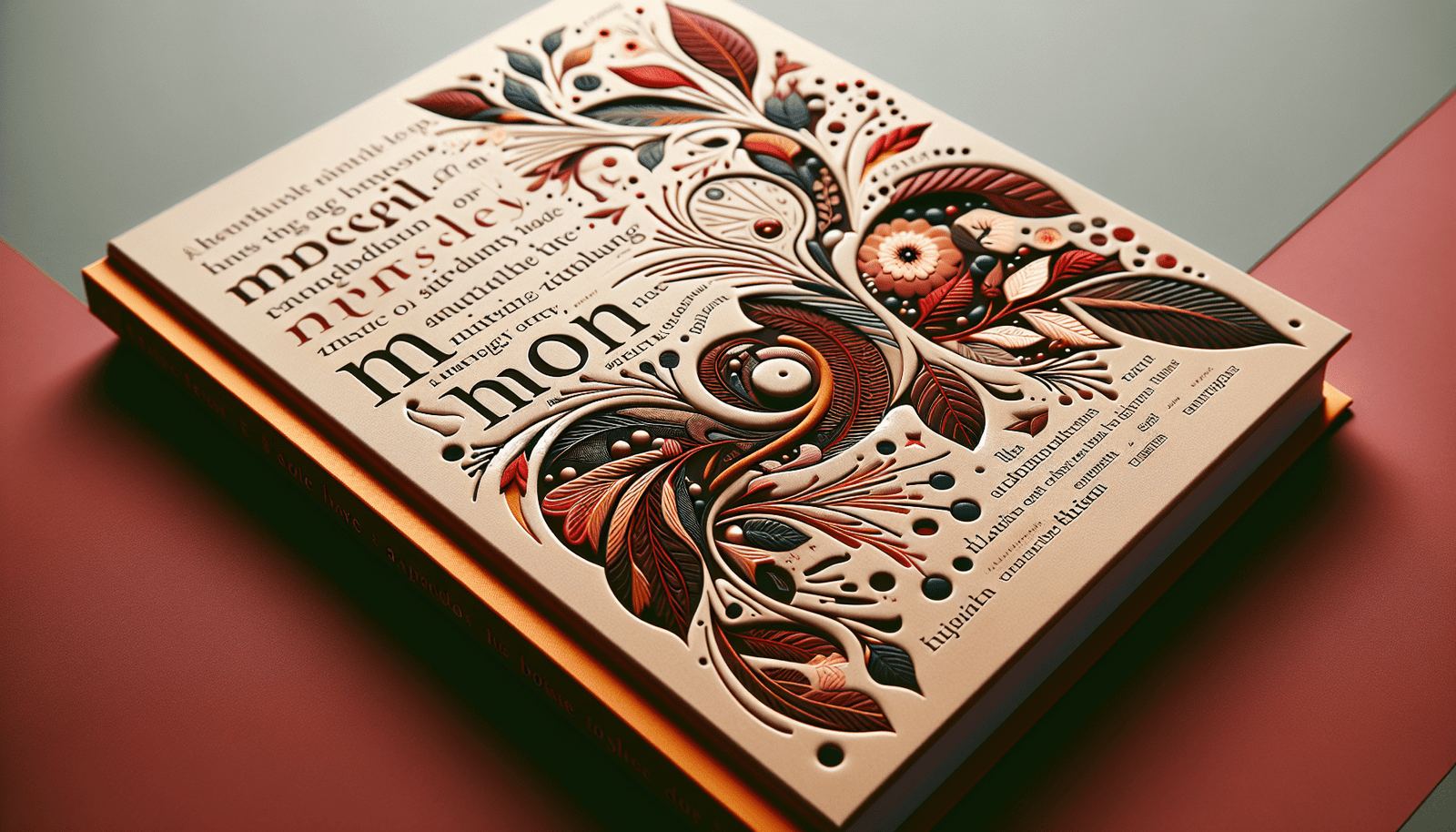When you stroll through a bookstore or browse online, the allure of a captivating book cover can instantly draw you in and spark your curiosity. In “How Do Emotionally Engaging Book Covers Boost Reader Engagement and Curiosity?” you’ll discover how visually appealing designs—rich with emotion and storytelling elements—capture your attention and make you eager to delve deeper into their pages. This brief exploration uncovers the psychological impact of colors, images, and typography in creating a powerful first impression that can lead you to pick up a book and even buy it on the spot.
Have you ever found yourself mesmerized by a book cover, unable to resist picking it up to explore further? If you have, you’re certainly not alone. There’s a profound connection between the visual appeal of a book cover and the reader’s curiosity, and today, we’re diving deep into this fascinating phenomenon.
What Makes a Book Cover Emotionally Engaging?
Emotionally engaging book covers have a special formula that grabs your attention and doesn’t let go. These covers aren’t just visually appealing; they evoke feelings, memories, and curiosity. But what elements contribute to this emotional pull?
Color Psychology
Colors have a remarkable impact on human emotions. A well-chosen color palette can convey the mood, tone, and genre of a book. For instance, warm colors like red and orange can evoke feelings of passion and excitement, while cooler tones like blue and green can offer a sense of calm or mystery.
| Color | Emotions Evoked |
|---|---|
| Red | Passion, excitement, energy |
| Blue | Calm, peace, mystery |
| Yellow | Happiness, optimism, warmth |
| Green | Nature, tranquility, growth |
| Black | Sophistication, elegance, mystery |
| White | Purity, simplicity, peace |
Imagery and Illustrations
The imagery on a book cover provides an immediate visual synopsis of what lies within. Whether it’s a haunting landscape, a whimsical illustration, or a compelling photograph, the right image can convey a thousand words and evoke various emotions, from curiosity to intrigue, and even nostalgia.
Typography and Layout
Typography plays a crucial role in setting the tone of a book. The typeface, size, and arrangement of words can hint at the book’s genre and mood. A gothic script might suggest a dark, mysterious novel, while whimsical, hand-drawn fonts might indicate a lighthearted, fun read.
Texture and Finish
The texture of a book cover, whether it’s silky smooth, embossed, or matte, can also add to the tactile experience, making you more inclined to pick it up and feel it in your hands. Sometimes, it’s not just what you see, but what you feel that matters.
The Psychological Impact of Book Covers
Your brain is wired to process visual information quickly, making book covers an essential aspect of the decision-making process. But why are some book covers more appealing than others?
The First Impression
Just like meeting someone for the first time, the initial glance at a book cover can create a lasting impression. A cover that resonates emotionally sends a signal to your brain that says, “This is worth your attention.”
Memory and Recognition
A unique and emotionally engaging book cover can leave a lasting imprint on your memory. This is especially important in a crowded market where readers are bombarded with choices. A memorable cover ensures that the book stands out from the rest, increasing the likelihood of a purchase.
Emotional Connection
When a book cover triggers an emotional response, you begin to form a connection before even reading the first page. This emotional bond can enhance your overall reading experience, making you more invested in the story and its characters.
The Role of Genre in Book Cover Design
Different genres have specific design conventions that help readers quickly identify what type of book they’re looking at. Understanding these conventions can make the design process more effective.
Fiction vs. Non-Fiction
Fiction book covers often focus on creating an emotional atmosphere, using elements like illustrations, dramatic typography, and evocative color schemes. Non-fiction covers, on the other hand, often aim to establish credibility and clarity, using clean, straightforward designs and serif fonts.
Genre-Specific Elements
For different genres, certain elements are more prevalent:
- Romance: Soft colors, dreamy illustrations, and elegant fonts.
- Thriller: Dark colors, bold typography, and suspenseful imagery.
- Science Fiction: Futuristic elements, metallic fonts, and space or technological themes.
- Fantasy: Mythical creatures, elaborate fonts, and magical landscapes.
- Historical: Vintage photos, classical fonts, and sepia tones.
Tips for Creating Emotionally Engaging Book Covers
Creating a visually and emotionally engaging book cover is an art. Here are some tips to help you achieve that perfect balance.
Know Your Audience
Understanding your target audience is crucial. What appeals to young adults might not attract older readers. Conduct market research to determine what types of covers resonate with your intended demographic.
Use Professional Design
While it’s tempting to create your own cover, working with a professional designer can make a world of difference. Designers have the skills and tools to bring your vision to life in a way that captivates potential readers.
Test Different Designs
Don’t settle for the first design you see. Use A/B testing to compare different cover designs and gather feedback. This way, you can refine your cover to ensure it has the maximum impact.
Case Studies: Successful Emotionally Engaging Book Covers
Sometimes, the best way to understand what works is by looking at successful examples. Here are a few book covers that have done an exceptional job of engaging readers emotionally.
“The Night Circus” by Erin Morgenstern
This cover uses black, white, and red to create a sense of mystery and enchantment. The intricate designs and whimsical illustration beautifully capture the fantastical elements of the story.
“Gone Girl” by Gillian Flynn
With its stark black background and simple orange font, this cover exudes suspense and intrigue. The minimalistic design draws you in, making you want to uncover the secrets hidden within.
“Eleanor Oliphant is Completely Fine” by Gail Honeyman
The cover features a hand-drawn illustration of a house with a whimsical, almost childlike font. The warm colors and inviting design perfectly convey the heartwarming and quirky nature of the story.
| Book Title | Elements Used | Emotional Impact |
|---|---|---|
| The Night Circus | Black, white, and red colors, intricate designs | Mystery, enchantment |
| Gone Girl | Stark black background, simple orange font | Suspense, intrigue |
| Eleanor Oliphant is Completely Fine | Hand-drawn illustrations, whimsical font, warm colors | Heartwarming, quirky |
The Future of Book Cover Designs
As technology evolves, so do the possibilities for book cover designs. From augmented reality to interactive elements, the future holds exciting prospects for creating even more emotionally engaging book covers.
Augmented Reality (AR)
Imagine pointing your phone at a book cover and seeing the characters come to life or watching a brief trailer of the story. AR can add a new layer of engagement, making the cover not just a visual experience but an interactive one.
Sustainable Design
As sustainability becomes a more significant concern, eco-friendly materials and designs are gaining popularity. Sustainable designs not only appeal to environmentally conscious readers but also add a unique texture and feel to the book.
Personalized Covers
Advances in printing technology allow for more personalized book covers. Imagine owning a cover that reflects your personal taste, making your reading experience even more special.
Conclusion: The Power of Emotionally Engaging Book Covers
Emotionally engaging book covers have the extraordinary ability to capture your attention, evoke feelings, and pique your curiosity. From the choice of colors to the typography, every element works together to create a visual and emotional impact. In a world where first impressions matter more than ever, an emotionally engaging book cover is a powerful tool in capturing the hearts and minds of readers.
So, the next time you find yourself drawn to a book cover, take a moment to appreciate the artistry and psychology behind it. After all, a well-designed cover is not just a pretty face – it’s the gateway to a world waiting to be explored.
Happy reading! 🌟



